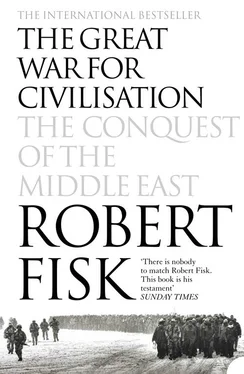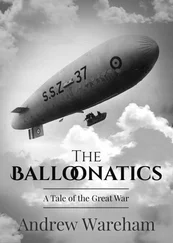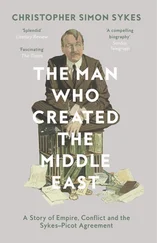We walk in churchlike silence down the aisles of the dead, Westerners with no excuses, cameramen filming the dead in long-shot for audiences who will not be able to accept – to ‘cope’ – with the reality of what the US navy has just done. Only those passengers obliging enough to have died without obvious wounds, or who were lucky enough to have been killed without their faces being disfigured by the explosion of the two Standard missiles fired at their plane by the USS Vincennes , would be honoured with photographs in Western newspapers. Our response was predictable: we didn’t mean to do it; the destruction of the airliner was a mistake. But it was Iran’s fault.
I can remember so well that phone call from The Times . I am holidaying in Ireland that bright warm summer Sunday, and I have spent the morning in Dublin, talking to John Grigg, the historian who will be writing volume VI of the history of The Times from 1966 to 1981, during which Rupert Murdoch took over the paper. Over coffee, I recall for Grigg my four years as a correspondent in Northern Ireland and – although it falls outside his volume – the infamous story of the ‘Hitler diaries’. Murdoch had been bamboozled into serialising these totally fictitious papers – supposedly the Nazi Fïhrer’s ravings on Chamberlain, his mistress Eva Braun, et al . *
‘I’m sure you know what’s happened,’ the duty desk editor says from London. ‘The editor wants to know how soon can you get to the Gulf.’ Every reporter hates that moment. What had ‘happened’? I hadn’t listened to the news that morning. Sometimes it is possible to bluff this out, to reply vaguely and then hurriedly tune to the radio news to find out what I am supposed to know. This was not one of those occasions. ‘The Americans have shot down an Iranian passenger jet over the Gulf,’ came the voice over the phone. ‘The American ship was called Vincennes and it fired two heat-seeking missiles at the aircraft … They say it was a mistake.’ Well, they would, wouldn’t they? I mean, the Americans could hardly claim that the airliner was packed with ‘terrorists’. Or could they? Sure enough, the Pentagon was already suggesting that the pilot might have been trying to fly his plane into the American warship. The American ship’s captain would travel to Bahrain to explain how he had fired at a civilian plane.
This was just the sort of ‘tragedy’ I had predicted in my dispatch to The Times from the Gulf in May 1987, an American warship panicked into believing that a civil airliner was an attacking jet. What was it the Broadsword’s lieutenant commander had told me that sweltering night as his British radar operators were checking the transponder numbers over the Gulf? ‘If you want to avoid burning up six sheikhs in their private jet, you’ve got to be bloody careful.’ But this was not a private jet. This was a packed airliner which had been blasted out of the sky. I flew to Paris with Lara Marlowe, who would write a brilliant, scathing dispatch for the International Herald Tribune on the slaughter. Harvey Morris, now of the Independent , was at Roissy Charles de Gaulle airport, dragging on his usual cigarettes. ‘Now they’ve really copped it,’ he said, without explaining who ‘they’ might be. The Iranians or the Americans? We would soon find out. We took the Emirates flight to Dubai – the nearest non-Iranian city to the scene of the mass aerial killing.
It was an eight-hour flight, hot and stuffy and crowded. In front of me sat a reporter for a London radio station, writing feverishly into his notebook. He was, he said, drafting his first report so that he could go on air the moment our flight landed next morning. And what, I couldn’t help asking – since he had not even arrived in Dubai to make a single inquiry – would be the thrust of this dispatch? ‘The danger of the Iranians using suicide boats to take revenge on the Americans,’ he said. He readily admitted he was making this story up on the plane, but said he also planned to write a report suggesting that the Iranians would try to assassinate the captain of the Vincennes . When I asked if he shouldn’t also be questioning American naval competency, he replied that ‘We might be challenged on that story’. Already the machinery was turning. The Americans who had destroyed the passenger jet were the potential victims; the real victims – all of them dead – were the aggressors.
Iran Air flight IR655, piloted by Captain Mohsen Rezaian, had taken off from Bandar Abbas on a scheduled passenger flight to Dubai with 290 passengers. The Americans, as usual, got their version out first, although it would change many times over the coming days. We were told that the Iranian Airbus was not on a normal flight path, then that its pilot failed to respond to warnings from the Aegis-class cruiser USS Vincennes , then that the plane was diving towards the American warship and that its identification transponder was not working. Captain Will Rogers the Third, the captain of the Vincennes , believed – according to the Pentagon – that he was under attack by an Iranian F-14 Tomcat fighter aircraft. But the American story began to crumble when the Italian navy and another American warship, the frigate Sides , confirmed that the plane was climbing – not diving to attack – at the time of the missile strike.
So the story changed again. The Pentagon now said that the plane’s transponder might not have been giving out correct signals. Later, this was subtly changed; the transponder was identifying the Airbus A300B2 as a military aircraft, because the Iranians had earlier changed the coding when they used the same plane to take troops to the war front – and had forgotten to revert to the civilian code afterwards. Why the Iranians would have used the Airbus to conceal their troop movements from the Iraqis but blown their own cover by obligingly giving the aircraft a military identification that would reveal its true purpose was never explained by the Pentagon. The all-important issue was to justify the frightfulness of what had happened, to talk of the ‘tragedy’ of the passenger jet’s destruction. Tragedies are forgivable. The advantage for the Americans was that the Iranian side of the story would never be fully told – because those most intimately involved were all dead.
In Dubai, I went straight to the British air traffic controllers who had so often helped me during the ‘tanker war’. They had heard the radio traffic over the Gulf on that fatal Sunday morning – and their story was horrifying. For weeks, they told me, they had been appalled at the apparent lack of training and efficiency of US naval personnel challenging civilian aircraft. The pilots of airliners on scheduled flights down the Gulf from Kuwait were being repeatedly and aggressively challenged by American warship crews who seemed not to know that they were cruising beneath established air lanes.
In one incident – well known to the controllers but kept secret from the press – a US frigate had stationed itself off the Emirates coast and radio-challenged every civilian flight approaching Dubai International Airport. In desperation, the British duty controller at the airport called the US embassy in Abu Dhabi and told American diplomats to instruct the ship to move away because it was ‘a danger to civil aviation’. Civilian helicopter pilots off the coast had often complained that American warships challenged them on the wrong radio frequencies. The controllers in Dubai could hear some of the US navy’s traffic. ‘Robert, the Americans knew at once that they’d hit a passenger airliner,’ one of them told me quietly. ‘There was another American warship close by – we have its coding as FFG-14. Its crew reported seeing people falling at great speed out of the sky.’
Читать дальше












